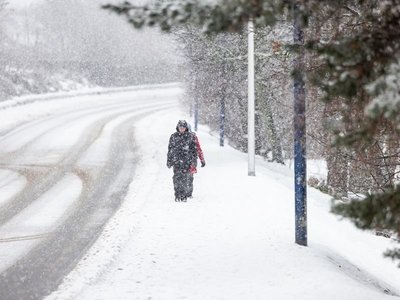A Tragedy in the West Midlands: Catalyzing Change for Road Safety
In the wake of a young boy's tragic death, a multifaceted approach to road safety surfaces as essential.
The recent tragedy in the West Midlands, where a young boy lost his life after a collision with a bus, serves as a poignant reminder of the urgent need to re-evaluate road safety strategies.
This heartrending event not only highlights the inherent risks in daily commutes but also underscores the shared responsibilities between pedestrians and drivers.
As cities continue to grow, the complexities of managing road safety intensify, prompting a critical conversation about precautionary measures.
One fundamental pillar in preventing such tragedies is education.
Schools must integrate comprehensive road safety programs, equipping young minds with the knowledge to navigate complex urban environments safely.
While education lays the groundwork, it must be complemented by robust infrastructure designed with pedestrian security as a priority.
Urban planners have an instrumental role in ensuring that city layouts aren't mere conduits for vehicles but rather safe havens for foot traffic, especially in areas with high pedestrian activity.
Yet, the onus shouldn't solely rest on pedestrians.
Drivers hurdling through densely populated zones require systematic, rigorous training, and regular assessments to sharpen their road safety aptitudes.
This might be the opportune moment to advocate for policy reforms that mandate more exacting standards for driver certification.
In an era where technology is seamlessly embedded into our daily lives, leveraging AI could offer real-time solutions for accident prevention.
Advanced monitoring systems and alert mechanisms, if integrated efficiently, could serve as allies in curbing pedestrian-vehicle collisions.
However, technology, as promising as it may be, is not a panacea.
The human elements of empathy and awareness remain irreplaceable and pivotal.
The pragmatic path likely lies in adopting a hybrid approach—merging education, enhanced infrastructure, technological innovation, and rigorous driving assessments.
Implementing these changes demands careful enforcement strategies that garner public support, underpinned by transparency and community involvement.
To achieve sustainable progress, society must foster a culture where safety and empathy underpin interaction between all road users.
While it is profoundly tragic that such an incident is what brings these issues to the forefront, it also serves as a potential catalyst for meaningful change.
As citizens reflect on how they can contribute to a safer world through everyday actions, policymakers must seize this opportunity to pave the way for a future where tragedies like the one in the West Midlands are not just rare but actively prevented.
This heartrending event not only highlights the inherent risks in daily commutes but also underscores the shared responsibilities between pedestrians and drivers.
As cities continue to grow, the complexities of managing road safety intensify, prompting a critical conversation about precautionary measures.
One fundamental pillar in preventing such tragedies is education.
Schools must integrate comprehensive road safety programs, equipping young minds with the knowledge to navigate complex urban environments safely.
While education lays the groundwork, it must be complemented by robust infrastructure designed with pedestrian security as a priority.
Urban planners have an instrumental role in ensuring that city layouts aren't mere conduits for vehicles but rather safe havens for foot traffic, especially in areas with high pedestrian activity.
Yet, the onus shouldn't solely rest on pedestrians.
Drivers hurdling through densely populated zones require systematic, rigorous training, and regular assessments to sharpen their road safety aptitudes.
This might be the opportune moment to advocate for policy reforms that mandate more exacting standards for driver certification.
In an era where technology is seamlessly embedded into our daily lives, leveraging AI could offer real-time solutions for accident prevention.
Advanced monitoring systems and alert mechanisms, if integrated efficiently, could serve as allies in curbing pedestrian-vehicle collisions.
However, technology, as promising as it may be, is not a panacea.
The human elements of empathy and awareness remain irreplaceable and pivotal.
The pragmatic path likely lies in adopting a hybrid approach—merging education, enhanced infrastructure, technological innovation, and rigorous driving assessments.
Implementing these changes demands careful enforcement strategies that garner public support, underpinned by transparency and community involvement.
To achieve sustainable progress, society must foster a culture where safety and empathy underpin interaction between all road users.
While it is profoundly tragic that such an incident is what brings these issues to the forefront, it also serves as a potential catalyst for meaningful change.
As citizens reflect on how they can contribute to a safer world through everyday actions, policymakers must seize this opportunity to pave the way for a future where tragedies like the one in the West Midlands are not just rare but actively prevented.










